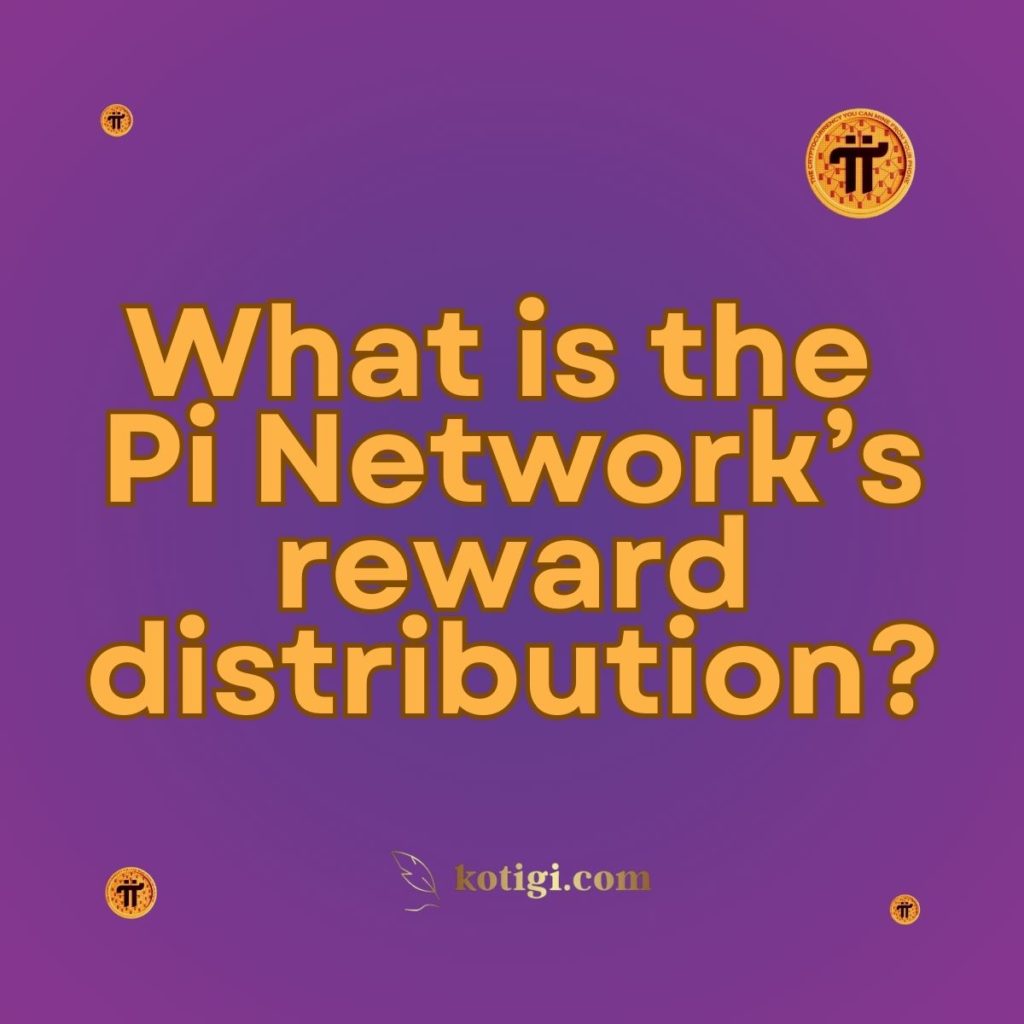
What is the Pi Network’s reward distribution?
The Pi Network’s reward distribution system compensates Pioneers through a unique mining process, where users earn Pi cryptocurrency by actively participating in the network. Factors influencing this distribution include individual mining rates, referral contributions, and network activity, ensuring that Pioneers are rewarded for their engagement.
Introduction
The Pi Network has redefined the way we perceive cryptocurrency by emphasizing community engagement and user participation. Officially launched on March 14, 2019, the Pi Network has rapidly grown to attract millions of users—known as Pioneers—who mine Pi cryptocurrency daily. A vital aspect of the Pi Network is its reward distribution system, which is designed to fairly compensate users for their contributions to the network’s growth and stability.
In this blog post, we will delve deep into the mechanics of how reward distribution works within the Pi Network. We will explore its impact on the community, how it incentivizes active participation, and what Pioneers can expect as they engage with the network. By understanding the intricacies of the reward distribution system, Pioneers can maximize their benefits and actively contribute to the network’s ongoing success.
Understanding the Reward Distribution Mechanism
How Rewards Are Generated?
At the heart of the Pi Network is a unique consensus mechanism that allows Pioneers to earn rewards by validating transactions and contributing to the network’s security. When users mine Pi, they are actively participating in the network’s operations, which generates rewards that are distributed to all active participants.
- Mining Process: The mining process in Pi Network is distinct from traditional mining in other cryptocurrencies, as it doesn’t require extensive computing power. Instead, users engage in a mobile mining process that consumes minimal resources. This accessibility enables a broader audience to participate in the network and benefit from the rewards.
- Earning Pi: Every 24 hours, Pioneers can claim their mining rewards by tapping the “Mine” button in the app. The amount of Pi earned is based on the user’s mining rate, which is influenced by several factors, including their engagement within the network and the number of referrals they have.
Factors Influencing Reward Distribution
The reward distribution in the Pi Network is influenced by several key factors, including:
- Mining Rate: Each user’s mining rate is determined by their level of engagement within the network. Higher engagement often leads to increased mining rates and, consequently, higher rewards. Users who interact more frequently, contribute to discussions, and help onboard new members tend to earn more.
- Network Activity: The overall activity within the Pi Network plays a crucial role in reward distribution. The more active users there are, the healthier the network becomes. Rewards may be adjusted to reflect the level of participation in the community. Increased participation creates a virtuous cycle that benefits all users.
- Referral Contributions: Pioneers can invite others to join the network, and both the inviter and invitee benefit from rewards. This referral system encourages community growth, as users are incentivized to bring more people into the network. The more people a Pioneer refers, the higher their mining rate can become, as long as those referrals remain active.
- Staking Mechanism: In addition to mining, the Pi Network has introduced a staking mechanism where Pioneers can stake their earned Pi to increase their mining rate further. This additional layer of participation not only benefits the individual but also helps secure the network, making it more robust.
The Role of Community in Reward Distribution
Promoting User Engagement
The Pi Network’s reward distribution system is designed to promote active participation and engagement among users. By rewarding Pioneers for their contributions, the network encourages users to remain involved in discussions, mining activities, and other community efforts. This collaborative spirit fosters a vibrant ecosystem where users can share insights, ask questions, and learn from one another.
- Community Building: The Pi Network’s emphasis on community is evident in its approach to reward distribution. When users feel valued and recognized for their contributions, they are more likely to engage with others and participate in community-building activities. This leads to a stronger, more cohesive network.
- Feedback Loops: Active users provide valuable feedback that helps improve the platform. The more Pioneers participate, the better the network can adapt to their needs. This creates a continuous feedback loop where users are not just recipients of rewards but also contributors to the ecosystem’s growth.
Building a Sustainable Ecosystem
The reward distribution model also plays a vital role in creating a sustainable ecosystem. By incentivizing community participation, the Pi Network ensures that users are motivated to contribute positively to the network’s growth. This self-sustaining environment allows users to benefit while investing in the success of the network.
- Incentivizing Good Behavior: The reward distribution system encourages good behavior among users. Since Pioneers are rewarded for their contributions, they are less likely to engage in spam or malicious activities. This helps maintain a positive atmosphere within the community.
- Long-Term Commitment: Users who understand the benefits of their contributions are more likely to stay committed to the network in the long term. As Pioneers continue to earn rewards, they develop a sense of ownership and responsibility toward the network’s success.
The Future of Reward Distribution
Plans for Enhancements
As the Pi Network continues to evolve, plans for enhancing the reward distribution system are underway. Future updates may include adjustments to the mining rates, changes in the referral system, or new mechanisms to reward users for their contributions. These enhancements aim to create an even more dynamic and engaging experience for Pioneers.
- Increased Transparency: One of the main goals of future updates is to increase transparency in the reward distribution process. Users will have access to information about how rewards are calculated and distributed, allowing for a clearer understanding of their contributions.
- New Incentives: The Pi Core Team is constantly exploring new ways to incentivize community participation. This may include introducing new types of rewards for specific actions, such as contributing to educational content, providing technical support, or participating in community events.
Transparency in Distribution
Transparency is a critical component of the Pi Network’s reward distribution system. Users will have access to information about how rewards are calculated and distributed, allowing for a clear understanding of their contributions. This transparency helps build trust within the community and reinforces the network’s commitment to fairness and accountability.
- Open Communication: The Pi Core Team emphasizes open communication with its community. Regular updates and detailed explanations of how the reward distribution works will ensure that users are informed and empowered.
- User Analytics: Future enhancements may include user analytics features within the app, allowing Pioneers to track their contributions and rewards in real-time. This visibility will help users understand how their actions impact the network and their potential rewards.
Addressing Challenges in Reward Distribution
Common Issues Faced by Users
While the Pi Network’s reward distribution system is designed to be fair and efficient, users may encounter challenges. Understanding these challenges can help the community find solutions and improve the overall experience.
- Spam and Abuse: As with any system, there is the potential for spam and abuse. Users may encounter others who try to manipulate the referral system or engage in malicious behavior. The Pi Network’s design aims to discourage such actions, but ongoing vigilance from the community is essential.
- Technical Issues: Users may face technical difficulties when mining or claiming rewards. These issues can stem from app glitches or connectivity problems. The Pi Core Team is committed to addressing these challenges promptly to ensure a smooth user experience.
Solutions for Improvement
The Pi Core Team actively seeks feedback from the community to improve the reward distribution system. Here are some potential solutions to common challenges:
- Anti-Spam Measures: Implementing stronger anti-spam measures within the app can help protect users from unwanted messages and improve the overall experience. This may include features like reporting mechanisms or automatic detection of suspicious activity.
- User Support: Providing robust user support is crucial for addressing technical issues. The Pi Core Team can enhance support channels, offering tutorials, FAQs, and responsive customer service to assist users facing difficulties.
The Impact of Reward Distribution on User Behavior
Encouraging Positive Engagement
The Pi Network’s reward distribution system significantly influences user behavior. By offering rewards for positive contributions, the network encourages users to engage in activities that benefit both themselves and the community.
- Community Contributions: Pioneers are motivated to share valuable content, participate in discussions, and help others. This collaborative environment enhances the overall quality of interactions within the network.
- Long-Term Vision: As users become more invested in the network, they develop a long-term vision for their contributions. This mindset encourages Pioneers to think about the future of the network and how they can play a role in its growth.
Shaping Network Dynamics
The reward distribution system also shapes the dynamics of the Pi Network. As more users join and participate, the network becomes stronger and more resilient.
- Diverse Participation: A diverse range of contributions enriches the network. Different perspectives and experiences enhance discussions and foster innovation within the community.
- Network Growth: As the reward distribution system effectively incentivizes participation, the Pi Network can expect continued growth. The more engaged users are, the more likely they are to invite others and expand the community further.
Conclusion
The Pi Network’s reward distribution system is a fundamental aspect of its ecosystem, designed to fairly compensate Pioneers for their contributions and promote active engagement. By incentivizing participation and fostering a collaborative community, the network is creating a sustainable environment that encourages growth and development.
As the Pi Network continues to evolve, users can look forward to enhancements in the reward distribution system that will further improve their experience. By understanding how the system works and actively participating, Pioneers can maximize their rewards and contribute to the network’s long-term success.
Key Takeaways
- The Pi Network rewards users through a unique mining process that requires minimal resources.
- Mining rates are influenced by individual engagement, network activity, and referral contributions.
- The community plays a critical role in promoting positive engagement and building a sustainable ecosystem.
- Plans for future enhancements aim to improve transparency and introduce new incentives for participation.
- Addressing challenges such as spam and technical issues is vital for ensuring a smooth user experience.
- The reward distribution system significantly influences user behavior, encouraging positive contributions and community growth.





